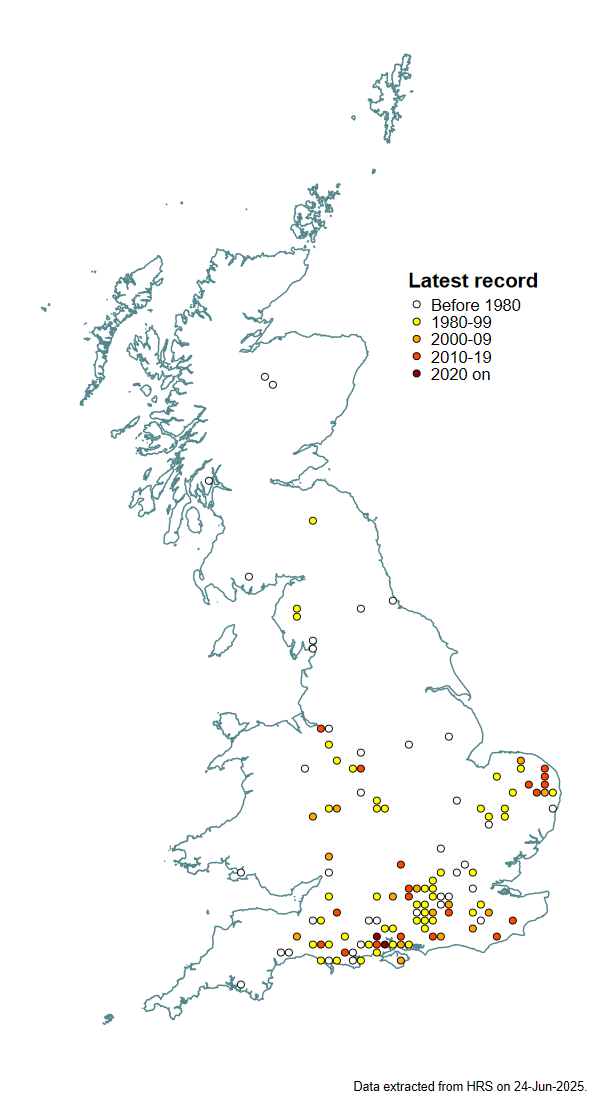Xylota abiens Meigen, 1822
Identification
Identification difficulty = 3. ![]()
![]() according to Ball & Morris, 20241
according to Ball & Morris, 20241
Biology
The larva has been found in the wet, decaying roots of a Beech Fagus sylvatica stump. It is associated with over-mature, deciduous woodland and usually occurs close to water. Adults sun bathe on stumps and fallen logs in small clearings or can be found running about over vegetation in dappled sunlight. As with many of the species of this genus, it is not often found visiting flowers.
Flight period
The following plots show the number of unique records per week excluding those reported to be of immature stages.

Status
Lower Risk (Nationally scarce) - Ball & Morris, 20142. Notable - Falk, 19913.
Distribution
A scarce species recorded mainly from south-east England, but with scattered records north to Cumbria and Durham. The two Scottish records are both literature records from the 1930s.

Trends
The following plots show the Frescalo TFactor vs year and a map of the rescaled frequency (all records) for the species.
-
Ball, S., & Morris, R. (2024). Hoverflies of Britain and Ireland. WILDGuides (3rd ed.). Oxford: Princeton University Press. ↩
-
Ball, S., & Morris, R. (2014). A review of the scarce and threatened flies of Great Britain. Part 6: Syrphidae. ( No. 9). Species status (pp. 1–130). Peterborough: JNCC. ↩
-
Falk, S. (1991). A review of the scarce and threatened flies of Great Britain. ( No. 39). Research and Survey in Nature Conservation (pp. 1–194). Peterborough: NCC. ↩